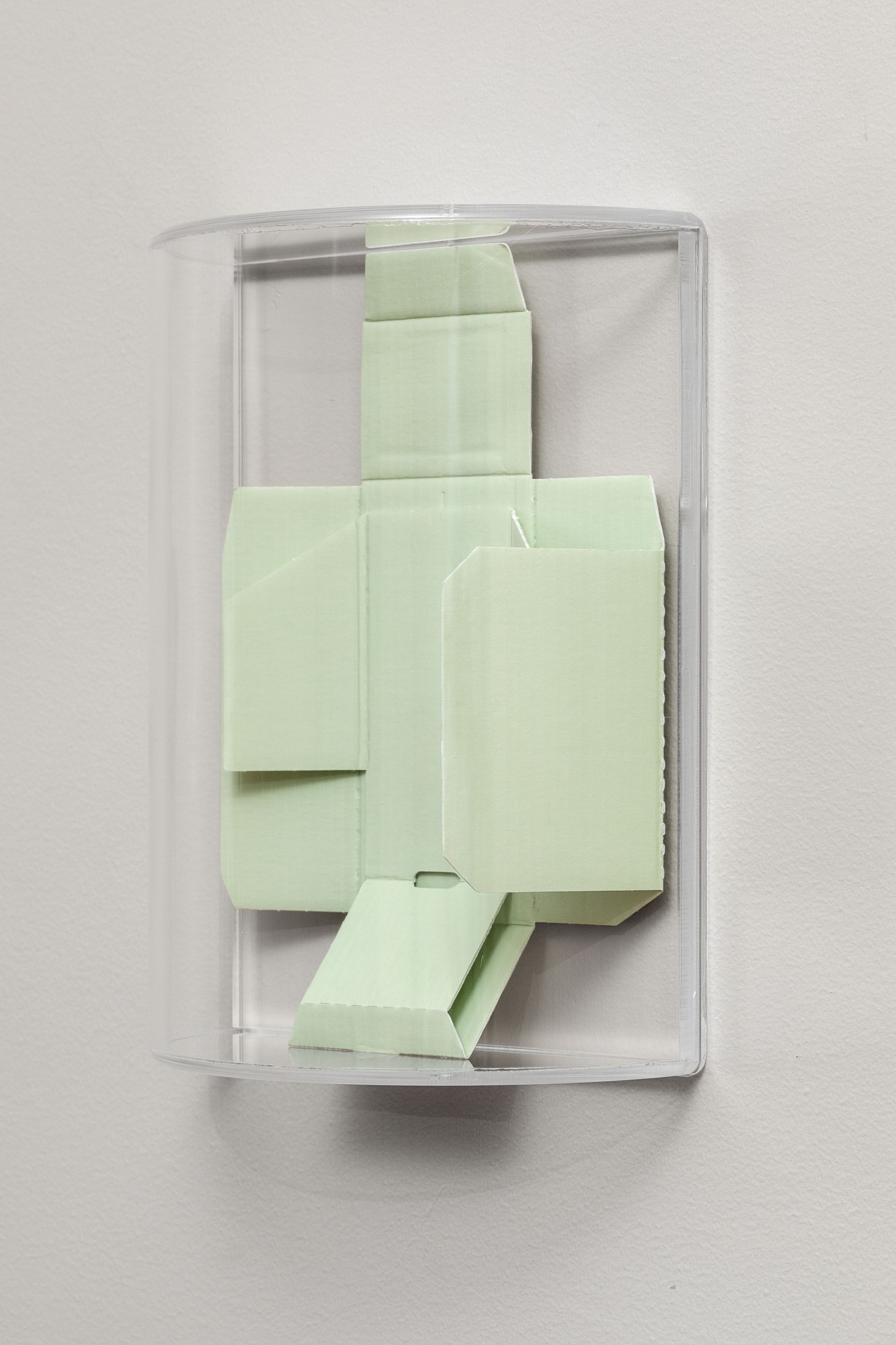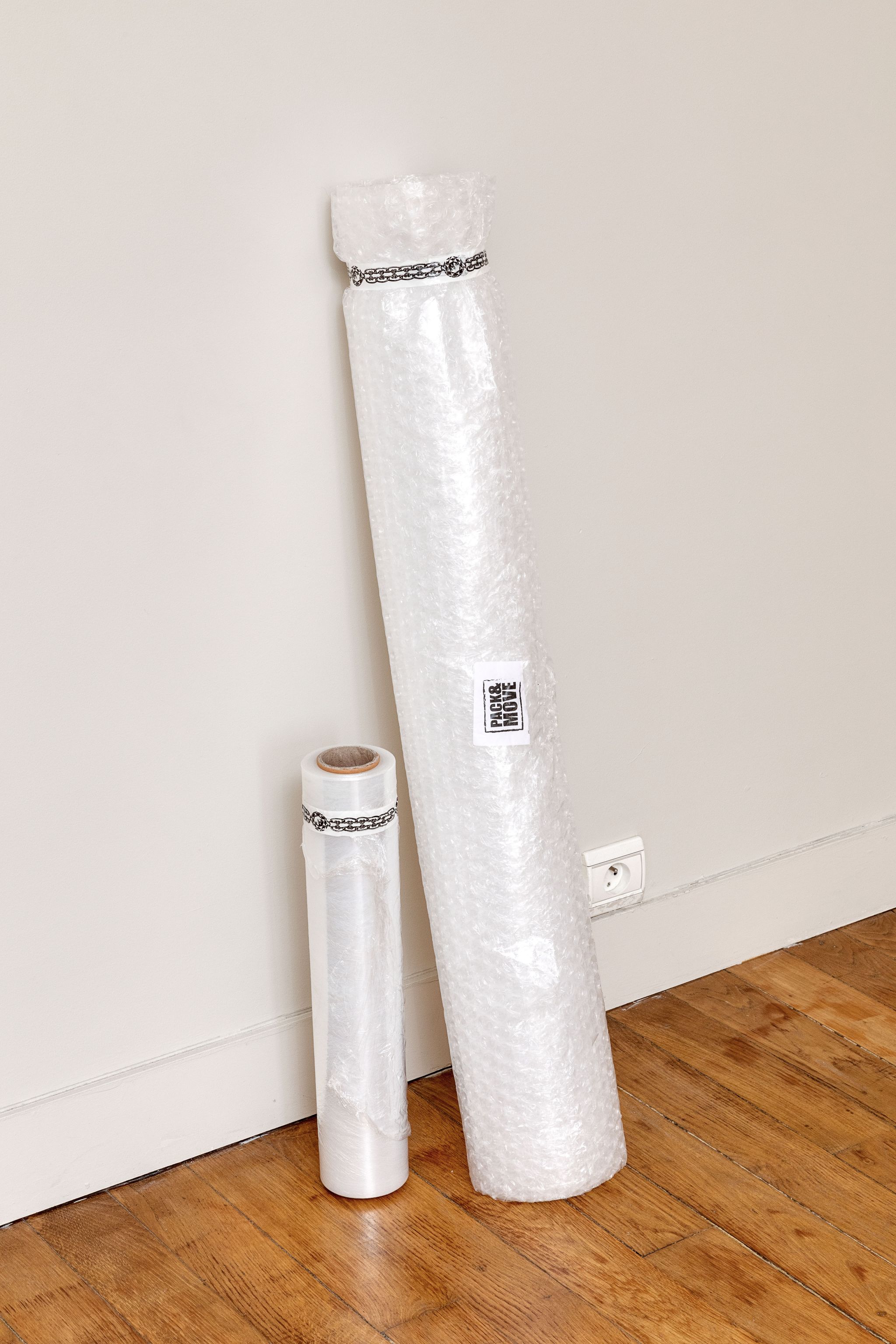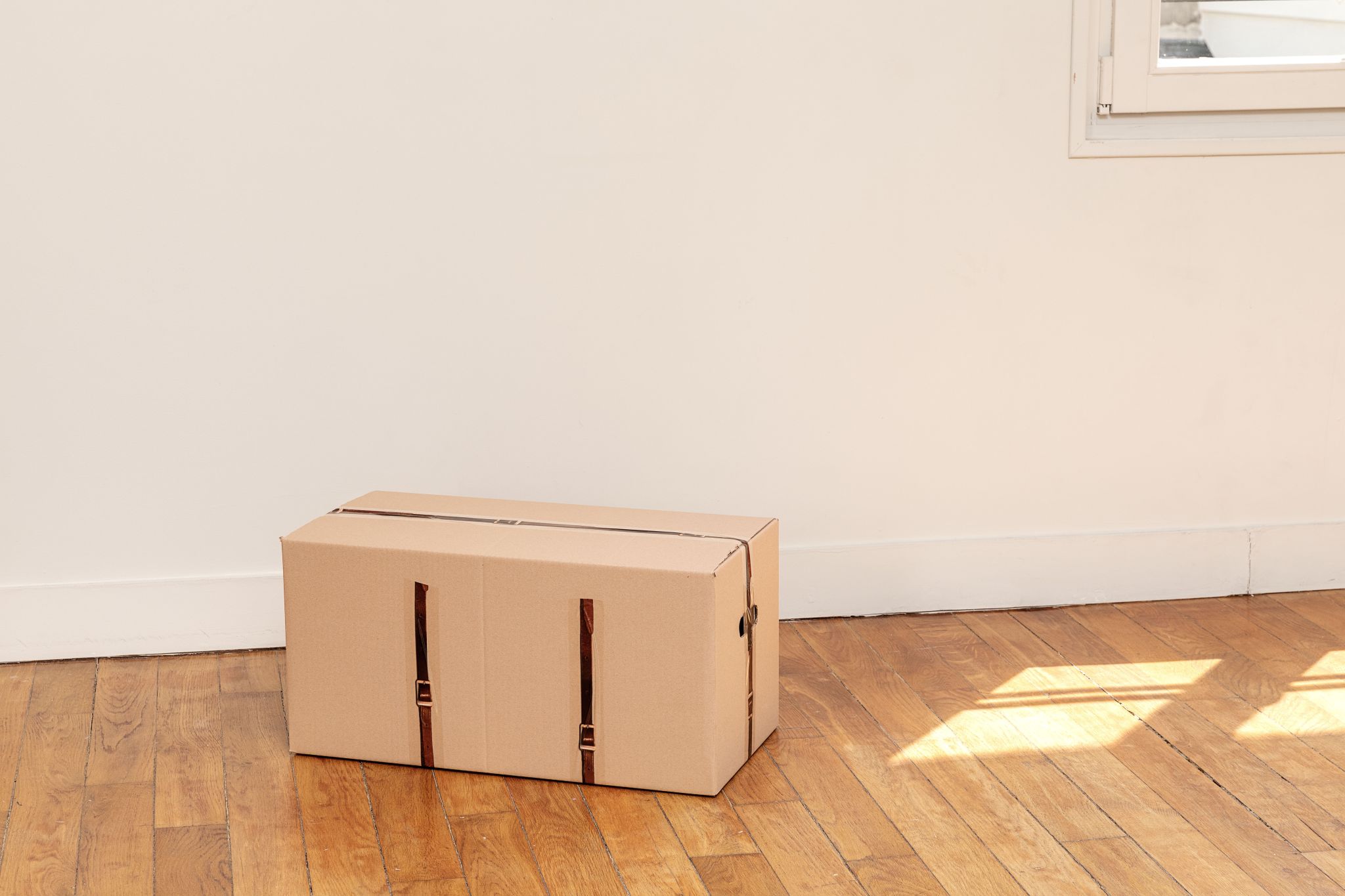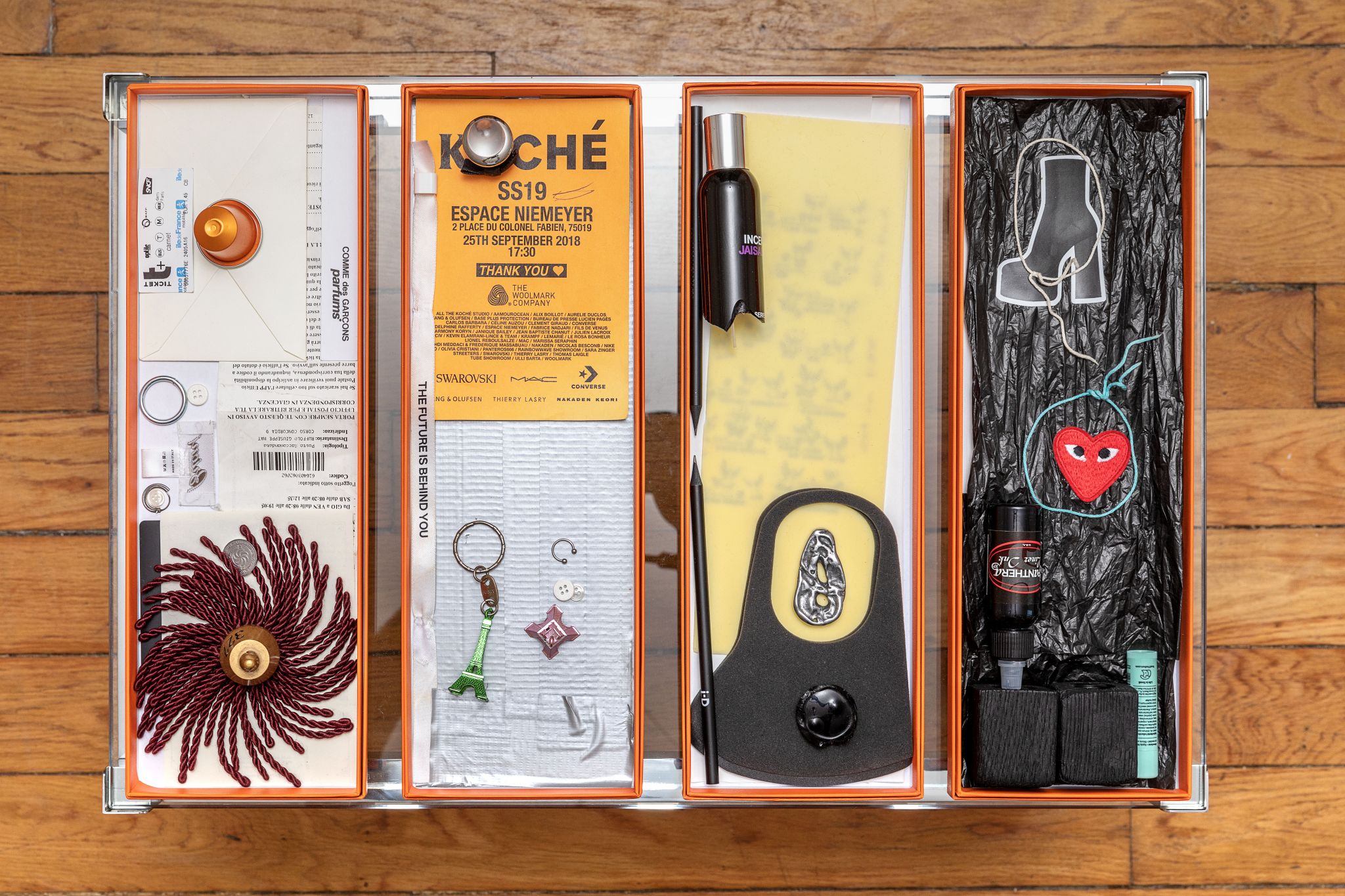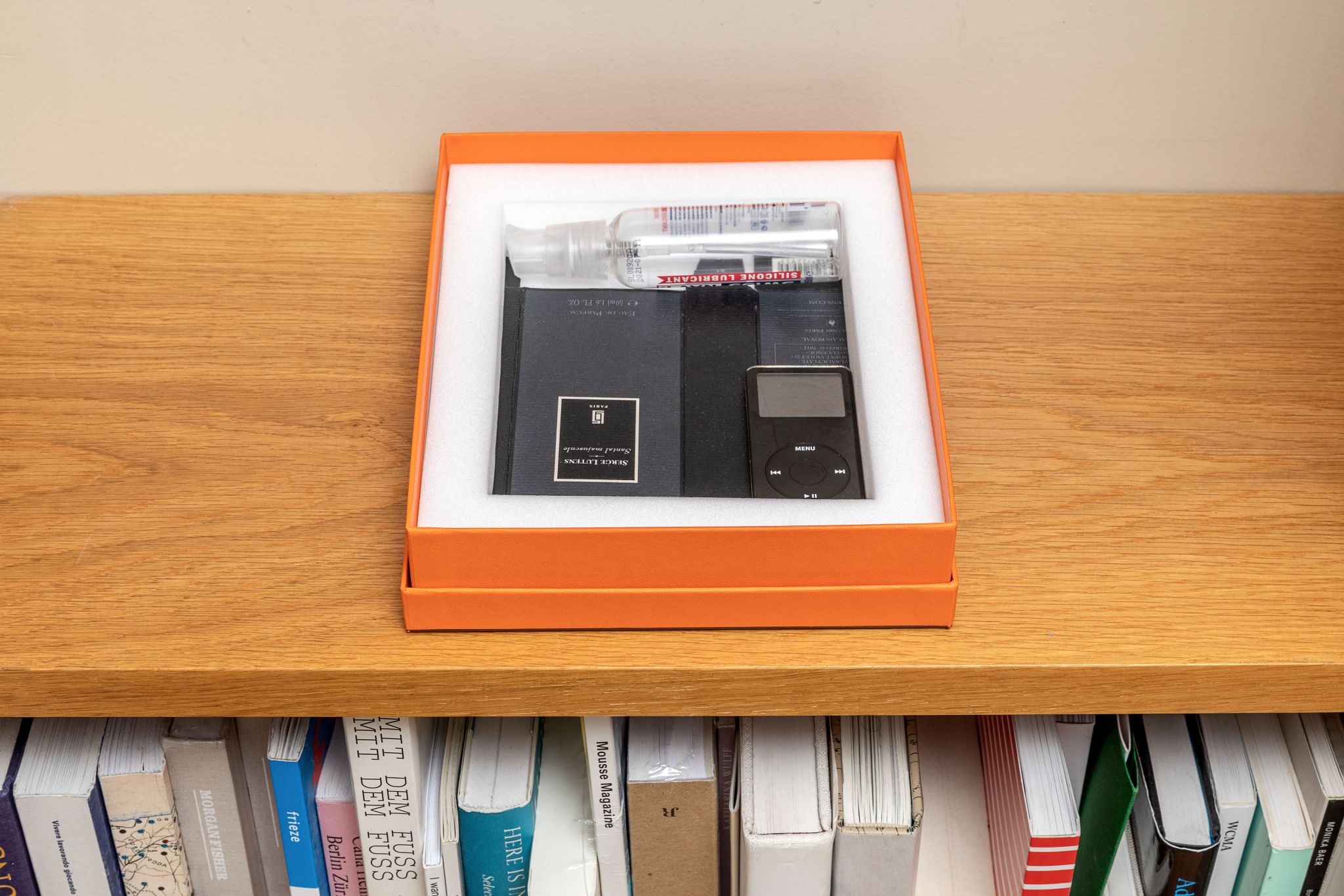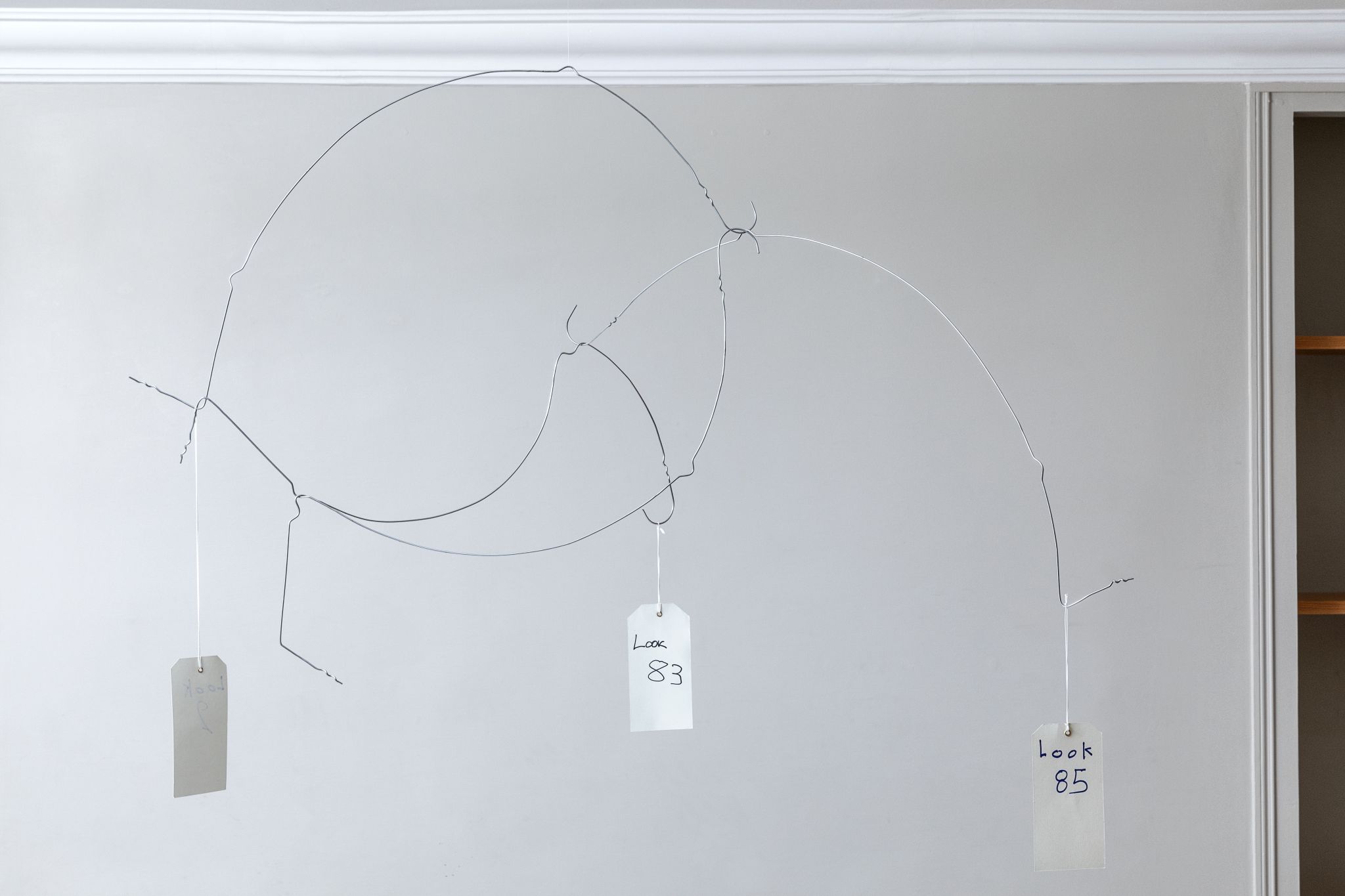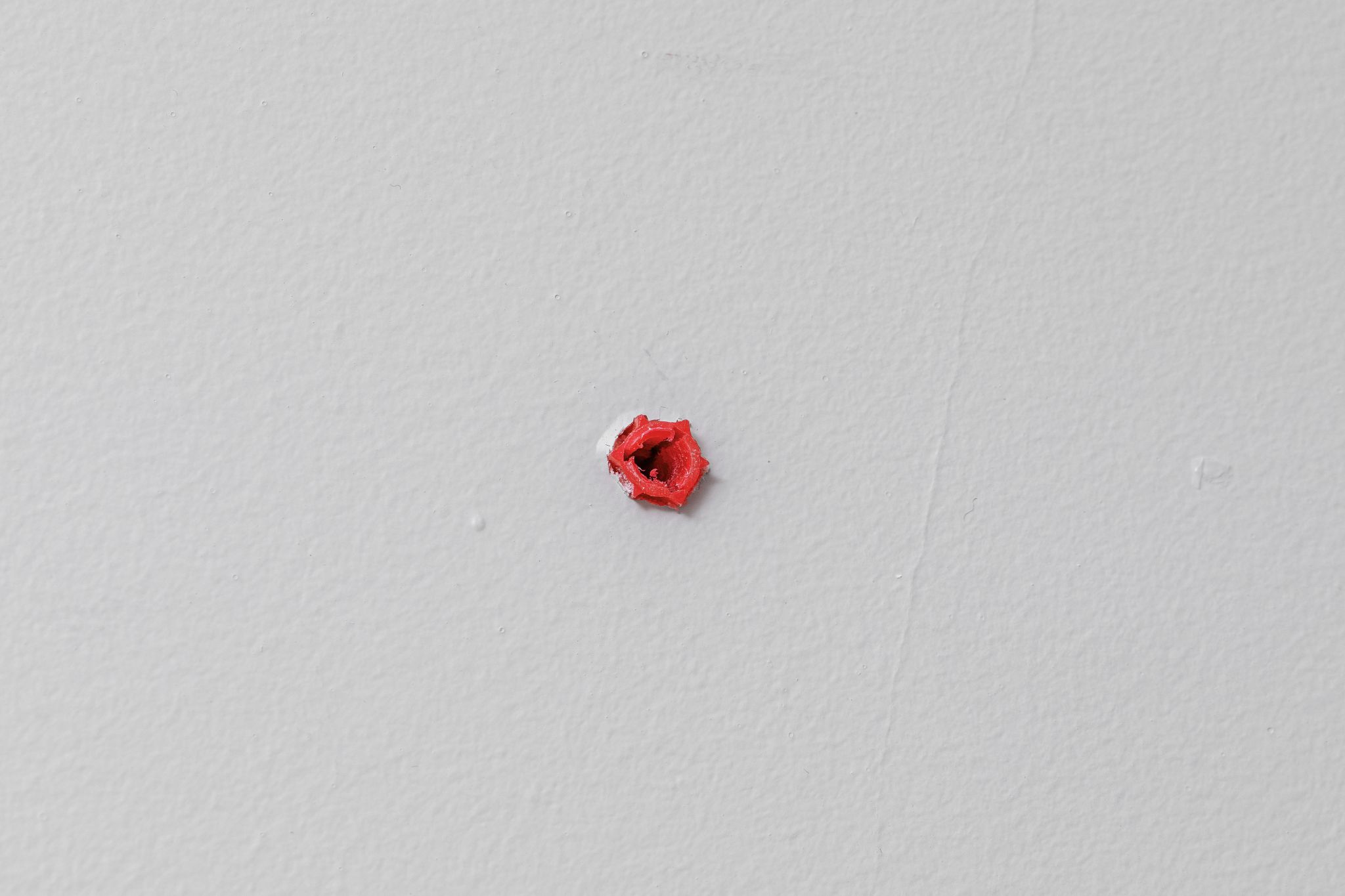-
Alessandro Bava: I mistook the working title—Arrivo del trasloco—as a nod to Loredana Berte’s great album, Traslocando, instead it is the title of a painting by Giorgio de Chirico. So I started thinking about the interviews in which Loredana speaks about her visits to the White House when she was married to the tennis player Björn Borg, how she often mentioned having to move apartments and how that is a traumatic experience for her.
read moreDavide Stucchi: I’m happy to be misunderstood. I wish Arrivo del trasloco was a single on that album... making use of the same piazza-related metaphor of the void. The title of the painting is easily misinterpreted. It’s not sure whether someone is moving in or out, has the truck just arrived or already finished unloading? The questions of transition and displacement are essential for the exhibition. By the way, I nearly dyed my hair in Loredana’s current china blue last month, but then I went for green. Three days later I shaved my head.
A: Loredana Berte’ and De Chirico... what a fun couple! I can think of more than one way of placing them in the space-time continuum. I read that De Chirico, who was a friend of Filippo De Pisis, spent some time in Ferrara after World War I., where he met Carlo Carrà, together they started the Pittura metafisica movement. He spent a lot of time at De Pisis’ family home, who, inspired by his visits to the Surrealist ateliers in Paris, had turned one of his rooms into a ‘salotto metafisico’—a room entirely covered in aluminium foil and decorated with hanging paper-mâché fish! Obviously I had to think of Andy Warhol’s silver room... and the FAC- TORY! In the 1980s, Loredana Berte spent time at the factory and met Warhol. He directed the music video of Movie that was released on her Made in Italy album. Now everything is a factory! Everything’s a salotto metafisico! Warhol’s silver room also moved locations a few times... traslocando!
D: Giorgio moved twelve times. He arrived quite late at his famous studio apartment at the Piazza di Spagna in Rome. That’s where I saw Arrivo del trasloco for the first time. Talking apartments: There is a tricky thing about Sundogs’ exhibition space. It looks like it belongs to a different building than the rest of the flat. From the outside, it has a different facade. I know someone who/that asked me not to reveal their secret but since ten years they’ve been collect- ing the keys to each of the spaces where they’ve exhibited their work. By now, they must have a whole necklace of keys...
A: Good metaphor for life! It’s all about collecting and losing keys! Didn’t Kippenberger say, if you have a key, just use it. My favourite thing about Sundogs, from what I can gather from the pictures, is the grey-ish wall color... but let’s not talk about the space! For once, I don’t feel like discussing architecture. How did you travel to paris? And what about the art? Did you make everything on site?
D: Let’s talk about me! I brought myself to Paris by train and I was accompanied by three bags. I was worried that everything wouldn’t fit.
A: Eheh! How are u feeling right now?
D: Packed, not ironed.
A: Mood! And how do you feel about Paris? What’s your fantasy?
D: Her mess!
A: That reminds me of the paradigmatic battle between LVMH and Hermès a few years ago, when the megacorporation attempted a hostile take-over of the historical family business.
D: Recently, my boyfriend of many years moved (trasloco!) out of our shared house. Which, in terms of timing, is weird, because I had planned this to be the theme of the Paris exhibition long before. So I’ve collected little things from my ex and asked him to organize them in some old Hermès boxes, which I brought to Paris. It was a two-way exercise, one in composition and the other in the absurdity of creating a hierarchy between memories, affects and time, by assigning different values to the objects that are mostly trash. I see them as personal little monuments or amulets, futile like a mandala. Obviously, the piece is called Her Mess.
A: I love that you speak about your boyfriend! He works in the fashion industry, so by includ- ing some of his things and, like you’ve done it in the past, making work that references him, you’re not only addressing personal affection or a poetic gesture, it also implies a critical re- flection of that industry. I often think about all the queer creative power feeding this machine, and the huge gap between how fashion is represented, often using working class aestethics, and how it’s consumed. But going back to the title of the show, in the end you chose to use the building’s door codes, there’s an inherent violence in how intimate spaces like homes become quasi-public and productive like an art space; on the one hand these spaces tend to function like public rooms for specific communities which is great, on the other you’re giving away the keys to the place. Will people visit at night?
D: They will come at any time of day! But good that you’re mentioning light conditions. Be- cause the exhibition has many diaphanous layers. I’ve used, for example, translucent fabrics and made display boxes with plexiglass. There are different “opened packagings” that make an appearance, some with goofy anthropomorphic posture. This is all to talk about a skin-like nakedness, which isn’t only a way to fetishize openness or even vulnerability, but more to highlight the theatrics of the private and the collective experience of intimacy. The boys told me a good mnemonic tool to remember the door codes, they’re both crosses and the second one starts with 97, which was a great year for music, movies and fashion, and ends with 28, which was a great age for Robbie.
A: Didn’t he change address all the time growing up?
D: Yes, his family moved a lot! Whenever they’d go somewhere new, all their belongings would be packed in boxes and labeled “personal effects”. Seeing all their belongings labeled as such, as “effects”, he couldn’t wrap his head around the meaning of the term. That the mov- ing had created an “effect” on them personally. Or understood as a verb, as in to bring about something, an execution of something, deeply personal. Effects are, of course, also used in the theatre—lighting effects, spectacle effects, and so on.
A: That’s interesting, let’s consider the exhibition as a spatially multi-layered, time-conscious staging ground. Cross-eying hexagonally forward and back!
Photos: Sundogs, Paris
Images courtesy of Sundogs, Paris
Wednesday – Friday 12 – 6 pm
Saturday 12 – 4 pm and by appointment
Davide Stucchi – 2546/9728
Sundogs, Paris, FR
06.07. – 08.09.2019
-
Alessandro Bava: I mistook the working title—Arrivo del trasloco—as a nod to Loredana Berte’s great album, Traslocando, instead it is the title of a painting by Giorgio de Chirico. So I started thinking about the interviews in which Loredana speaks about her visits to the White House when she was married to the tennis player Björn Borg, how she often mentioned having to move apartments and how that is a traumatic experience for her.
read more
Davide Stucchi
Her-mess, 2019
Lace
Dimensions variable
Davide Stucchi
Shanghai (mobile), 2019
Aluminium, tags
90 × 120 cm
Davide Stucchi
Her Mess, 2019
Cardboard, various discharged objects
22 × 18 × 5 cm
Davide Stucchi
Her Mess, 2019
Cardboard, various discharged objects
22 × 18 × 5 cm
Davide Stucchi
Tenzing, 2019
Aluminium
17 × 12 × 25 cm
Davide Stucchi
Robbie, 2019
Aluminium
17 × 10.5 × 24 cm
Davide Stucchi
Personal Effects, 2019
Cardboard, tape
30 × 30 × 60 cm
Davide Stucchi
Personal Effects, 2019
Cardboard, tape
83 × 15 × 15 cm
Davide Stucchi
Borneo 1834, 2019
Plexiglass, perfume packaging
23 × 17 × 17 cm
Davide Stucchi
Infusion D’Iris, 2019
Plexiglass, perfume packaging
23 × 17 × 17 cm
Davide Stucchi
Bullets, 2019
Wall anchors (red)
183 × 435 cm
Davide Stucchi
Arles (mobile), 2019
Aluminium, tags
80 × 110 cm
Davide Stucchi
Her Mess, 2019
Cardboard, various discharged objects
38 × 13 × 6 cm
Davide Stucchi
Her Mess, 2019,
Cardboard, various discharged objects
38 × 13 × 5 cm
Davide Stucchi
Her Mess, 2019
Cardboard, various discharged objects
38 × 13 × 4 cm
Davide Stucchi
Her Mess, 2019
Cardboard, various discharged objects
38 × 13 × 3 cm
Davide Stucchi
Neck Laced, 2019
Lupo, tape
Two elements: 100 × 16 cm, 44 × 9 cm

